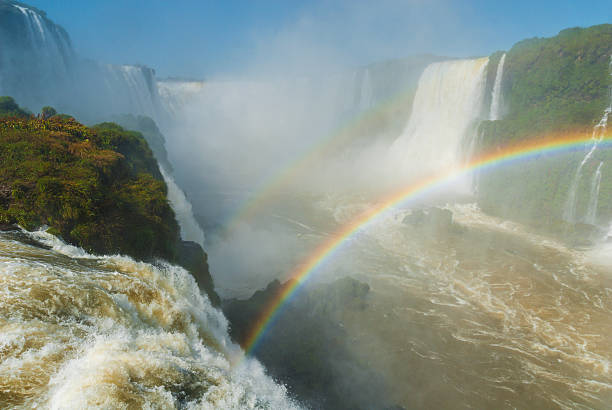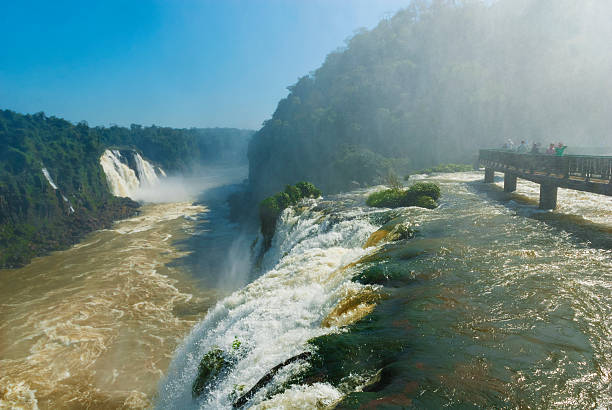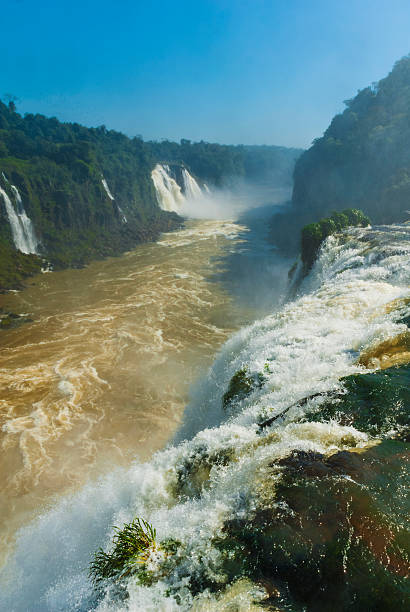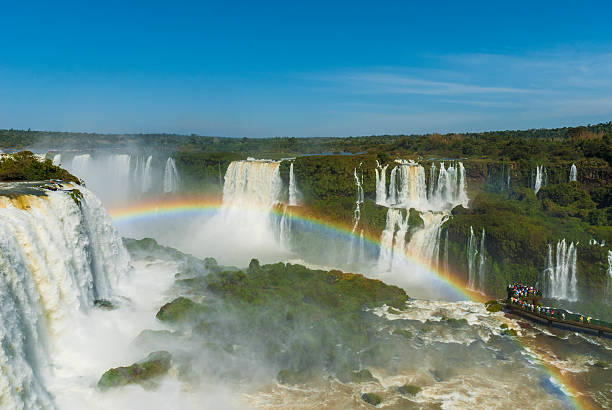“Iguazu Falls: A Magnificent Natural Wonder on the Border of Brazil and Argentina”
Iguazu Falls is one of the most magnificent natural wonders of the world, located on the border of Brazil and Argentina. This stunning waterfall system stretches across 2.7 kilometers and consists of 275 waterfalls of varying sizes, which collectively make it the largest waterfall system in the world. With its awe-inspiring beauty and tremendous natural power, Iguazu Falls is an attraction that never fails to leave visitors spellbound.
The Iguazu Falls are located on the Iguazu River, which flows through Brazil and Argentina, and is part of the larger Paraná River system. The falls are situated on the border of Brazil’s Paraná state and Argentina’s Misiones province. The name “Iguazu” means “big water” in the Guarani language, which is spoken by the indigenous people of the region.
The falls are divided into two main sections – the Brazilian side and the Argentine side. The Argentine side is home to the majority of the waterfalls and is known for its spectacular viewpoints and hiking trails. The Brazilian side provides visitors with panoramic views of the falls and is known for its bird’s eye view of Devil’s Throat, the most powerful and impressive waterfall of the system.

Iguazu Falls is a popular tourist destination and attracts millions of visitors every year. The falls can be accessed from both Brazil and Argentina and visitors can explore the waterfalls through various means, including hiking, boat tours, and helicopter rides.
One of the most popular activities is a boat tour that takes visitors to the base of the falls. These tours provide a unique and thrilling experience as visitors are drenched in the mist from the powerful waterfalls. Visitors can also hike along trails that lead through the rainforest, offering a chance to see the flora and fauna of the region.

The Iguazu Falls have a rich cultural and historical significance. The indigenous Guarani people have long considered the falls to be a sacred site, and their myths and legends have been passed down through generations. In the 16th century, Spanish explorer Alvar Núñez Cabeza de Vaca became the first European to encounter the falls.

The Iguazu Falls and its surrounding ecosystem are home to a diverse range of flora and fauna, including over 400 species of birds, mammals, and reptiles. The area is also home to several endangered species, including jaguars and giant otters. The governments of Brazil and Argentina have taken steps to protect the area, and the falls have been designated as a UNESCO World Heritage Site.

In conclusion, Iguazu Falls is a breathtaking and awe-inspiring natural wonder that draws visitors from around the world. The falls offer a chance to witness the power of nature and to explore the unique ecosystem of the region. It is important that we continue to protect and preserve this magnificent site for future generations to enjoy.


Hits: 0






